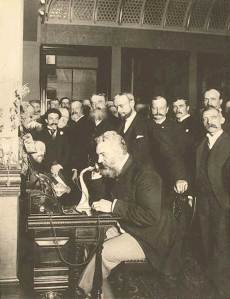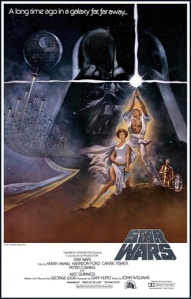My Trust in God & Man
Every loss is unique as it is something unique and irreplaceable we lament. David Robert Jones, better known as David Bowie…Ziggy Stardust…the Thin White Duke…was “one of a kind.” Those aren’t my words. They actually belong to my mother, a woman not known for deep appreciation of rock and roll. Yet even she is not beyond the influence of modern music’s greatest chameleon. On January 10th, 2016, Bowie’s legacy was forever cemented. Artist. Icon. Global treasure.
Retrobacktive serves to chronicle the 1980s. Bowie’s music as a whole is timeless, yet his many personas and experimentation can be easily compartmentalized due to his ferocious focus and deft ability to reinvent himself. In honor of him, Retrobacktive pays memorial by considering some of Bowie’s finer points during the 80s.
“Ashes to Ashes” (1980)
“Ashes to Ashes,” from the 1980 album Scary Monsters (and Super Creeps) was described by Bowie as “wrapping up the seventies really.” He considered the song a modern nursery rhyme that seems to deal with the artist’s own recovery from years of drug abuse. Both the song and album went to No. 1 in the U.K. and the video (co-directed by Bowie himself) is considered a landmark in the then burgeoning video music landscape.
“Under Pressure” (1981)
It might be the greatest collaboration in rock history. Officially released as a Queen song on their 1982 album Hot Space, controversy still abounds as to which musicians contributed to what parts of the song. As far as the lyrics are concerned the consensus generally points to Bowie as the primary writer. Regardless of the minute details the song’s juggernaut crescendo has few rivals in pure rock majesty.
Let’s Dance (1983)
After a roller-coaster decade of successes and setbacks in the 1970s, Bowie reached his commercial apex in 1983 with the U.K. No. 1 album, Let’s Dance. Focusing on a hybrid of synth-pop, blues rock, and funk, the album produced some of Bowie’s most popular hits, including the title track, “Modern Love, and “China Girl.” Bowie himself, however, often felt stifled by the album’s success, telling David Fricke in a Rolling Stone interview, “I had every intention of continuing to do some unusual material after that. But the success of that record really forced me, in a way, to continue the beast.”
Live Aid 1985
In addition to a high-energy performance at Wembley Stadium for the televised, multi-venue 1985 Live Aid concert for Ethiopian famine relief, Bowie and Mike Jagger debuted their video for the song “Dancing in the Street,” with the single’s proceeds going to the charity. It was another top ten hit for Bowie.
Labyrinth (1986)
Never confined to a single medium, Bowie made more than one venture to the silver screen, but perhaps outside of The Man Who Fell to Earth, Bowie’s most memorable cinematic performance was as Jareth, The Goblin King, in Jim Henson’s 1986 film Labyrinth. While not a box-office hit upon it’s release, the film has since gained a cult following and for many Gen X’ers this was their first introduction to the late, great David Bowie.
“As you get older, the questions come down to about two or three: how long and what do I do with the time I’ve got left?”
Bowie released his final album, Blackstar, two days before he died. Peel away all the layers – and there are many – at his core Bowie was a prolific musician as dedicated to his craft as any artist before. Despite an 18-month battle with liver cancer he carried on gracefully and left the world with a final gem in one of the most colorful catalogs of creation the world has ever seen. He leaves a great void in our world where the stars, indeed, look very different today.

